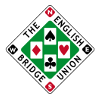
In this week's blog, we return to Devon to hear how Jeremy Child is getting on with his bridge teaching:
![]()
![]()
![]()
![]()
![]()
![]()
![]()
![]()
Some weeks ago I wrote about how we were starting on the long road to recovering our club back to its pre-pandemic heights, and in particular the beginners’ bridge course we were just about to run.
Well this is how we got on with the first lesson – and beyond.
To my pleasant surprise, 29 of my potential 36 attendees turned up, while 5 sent their apologies and said they’d be along the following week. On top of that, 4 new people enquired about joining from lesson 2.
I was concerned about having so many people to teach, but in the end the lesson went very well.
I started off with some expectation management. “You’re not here to learn bridge – that takes much longer than 20 hours. You’re here for an introduction to bridge that will give you a taste of it, and to have fun while you’re doing it.
And fun they did have. Everyone said how much they enjoyed it. We covered very little: Minibridge in No trumps, counting winners, promoting honours, establishing long suits. Not a trump or finesse in sight.
I had 4 helpers, for which I was profoundly grateful. I was quite specific about how I wanted things done - in particular I wanted to tightly control the messages going out. Fortunately, they were all willing to take this on board.
I am keenly aware that beginners can get overwhelmed if too much is presented to them at once – even by other beginners. Everyone (helpers and beginners alike) was told that we only looked at and discussed what had already been taught. If a finesse was on, we didn’t suggest it if finesses hadn’t been taught yet. It’s quite a difficult thing to take on board, but we all managed it.
So did it all go perfectly? Almost!
I did a LOT of planning. The one thing I missed was that most of the helpers had not come across mini-bridge (having learnt before it was a thing), so it was as new to them as to the beginners. The part where dummy is put down before the opening lead definitely foxed some of them! In retrospect I should have had a mini-bridge session with them first.
It’s now 4 weeks later, and I have just come back from lesson 5. We have 30 paid up beginners who are all really keen. The questions they ask show that they are learning, and many of them have got so into it they have set up private groups where they get together between lessons and practice. They are already asking what happens when the course ends - how do they continue?
The messages are still tightly controlled. Each week I send the helpers a detailed briefing note covering what we will be doing, the learning points, do’s and don’ts, along with a recap of things taught so far. This is so important! There are as many ways of teaching bridge as there are of playing it. Beginners need things to be black and white – they need protecting from the fact that there are other ways to do things.
They say that no plan survives first contact with the enemy, and that’s exactly what happened here. My carefully laid out and thought through 10-week plan has been rejigged every week since we started. What has surprised me most is that having put together what I thought was a fairly easy, “lightweight” teaching plan, all the changes I have made have taken things out of it, not put more in.
And this, I think. highlights two key lessons:
- The gulf between club players and beginners is HUGE. What seems so obvious to us it hardly needs mentioning is in fact several learning steps for beginners.
- Teaching them bridge is almost a side effect of the course. The two most important objectives are that:
- They enjoy themselves
- They coalesce into a cohesive social group
These are what will keep them coming back for more while we sneak in some bridge learning!
